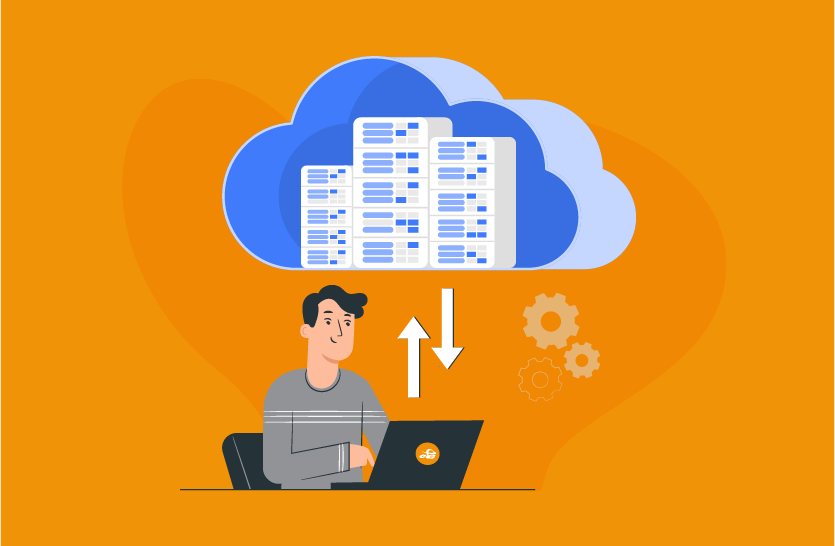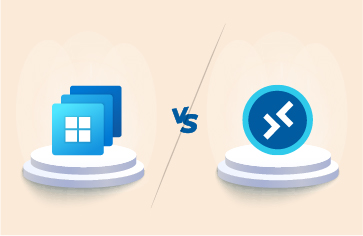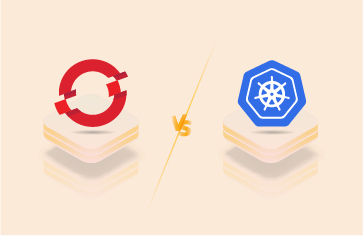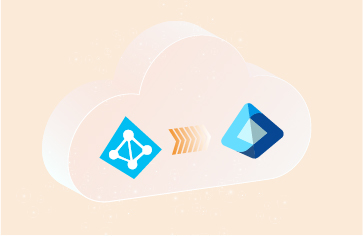In the ever-evolving world of IT infrastructure, there’s one question that often ignites passionate debates within IT teams: ‘What’s the golden ticket for our business?’. Hybrid cloud solutions are like stumbling upon hidden treasure in the vast IT landscape. But diving into them isn’t a leisurely stroll—it’s a thrilling adventure, complete with unexpected twists and turns. Each new step reveals new complexities, unraveling the quest for seamless integration.
In this blog, we delve into the age-old debate: on-premises infrastructure versus the alluring world of cloud solutions. Spoiler alert: there’s a game changer on the scene, and it’s called the hybrid cloud. Picture this: the best of both worlds coming together to create a powerhouse of unmatched versatility and scalability. We explore the benefits of hybrid cloud computing, from its unmatched scalability and flexibility to the promise of cost optimization.
But wait, there’s more! We’re addressing considerations for transitioning workloads between on-premises and cloud environments. Additionally, we emphasize the importance of continuous monitoring and optimization with eG Enterprise to confirm seamless operation and performance of hybrid cloud environments. With its real-time insights and proactive troubleshooting capabilities, eG Enterprise empowers organizations to harness the full potential of their hybrid cloud infrastructure – are you ready?
Hybrid Cloud Pros and Cons
| Pros | Cons |
| Offers a balance between on-premises and cloud infrastructure so organizations can leverage both | Can be complex and difficult to manage multiple environments |
| Provides the ability to scale resources up or down based on demand | Hybrid cloud setups can incur additional costs for integration, data transfer, and management |
| Allows organizations to keep sensitive data on-premises | Maintaining different policies and regulations across hybrid environments can be challenging |
| Ability to create robust disaster recovery solutions by replicating data on-premises and in the cloud | Limited flexibility can occur when vendors force a lock-in to specific technologies |
| Improved latency and performance for global end users | Performance may vary between on-premises and cloud environments, making it difficult to maintain SLAs |
Challenges with 100% On-Premises IT
Operating a fully on-premises infrastructure poses its own set of challenges, including:
- High Initial Capital Investment: Setting up on-premises infrastructure requires significant capital expenditure in hardware, software, and facilities.
- Disaster Recovery and Business Continuity: Implementing effective disaster recovery and business continuity plans on-premises can be complex and expensive. Organizations must invest in redundant hardware, backup systems, and failover mechanisms to mitigate the risk of data loss and downtime.
- Resource Underutilization: Inefficient resource utilization force organizations to provision for peak demand, leading to idle capacity during off-peak periods, resulting in wasted money.
Challenges with 100% Cloud Solutions
When relying solely on the cloud for all your operations, it’s the same as putting all your eggs in one basket. In this scenario, several challenges could potentially harm the business, including:
- Cost Management: Encountering unexpected expenses can really put a damper on your day. If not managed properly, cloud costs can spiral out of control. Organizations need to monitor usage, optimize resource allocation, and choose cost-effective service plans to avoid unexpected bills.
- Specialized training: Managing a cloud-based infrastructure requires specialized skills in areas such as cloud architecture, automation, and DevOps practices. Organizations may need to spend even more money on hiring talent with qualifications in cloud technologies.
- Limited visibility into performance: Relying on 24×7 internet connectivity means that performance can be affected by factors such as network latency, bandwidth limitations, and outages. IT teams must design redundancy, failover mechanisms, and performance monitoring strategies to ensure high availability and consistent performance.
What are the Benefits of Hybrid Cloud?
Sure, there are challenges, but let’s not forget the silver lining. There are advantages to using both on-premises and cloud infrastructures.
Hybrid cloud infrastructure represents a powerful combination of on-premises resources with cutting-edge cloud services sourced from various providers. This approach harnesses the strengths of both environments, offering unparalleled versatility and scalability. On-premises resources offer rock-solid reliability and control, perfect for security, while handling sensitive data and applications that require stringent governance. Meanwhile, cloud services swoop in with agility, scalability, and cost-efficiency, enabling rapid deployment of new applications and services without the constraints of physical infrastructure.
By leveraging the advantages of cloud infrastructure and benefits of on-premises environments, admins gain the flexibility to optimize their resources according to their specific needs, ensuring efficient operations and scalability.
Hybrid cloud benefits include:
- Scalability: hybrid cloud allows organizations to scale IT resources quickly and efficiently. Leverage on-demand resources such as servers, desktops, and serverless applications and rely on the cloud service to maintain the temporary spikes in demand rather than depending on teams to spend time doing this. This will optimize resource utilization and reduce costs.
- Flexibility: Run your mission critical workloads in-house, but leverage the cloud for development, testing and less-sensitive workloads.
- Cost optimization: Strategically divide workloads based on performance requirements and pricing models. One of the advantages of hybrid cloud computing is the Cloud’s economies of scale, which means that it’s pricing is lower because of the increased scale of operations and larger customer base.
Hybrid Cloud Advantages
If you are ready to experience the benefits of hybrid cloud infrastructure but aren’t sure where to begin, here’s what I suggest: start with where you are and start small. Whether you’re moving some services on-premises or into the cloud, consider application workloads, security requirements, and business needs.
Partial Transition to the Cloud
- Evaluate current hardware, software, applications, and data. Are there applications that need better scaling? Perhaps some have sensitive data and should stay on premises (a “Retain” strategy – see: Cloud migration vs modernization – What’s the difference?).
- Assess applications for cloud compatibility. Determine whether they need to be rearchitected, refactored or rehosted.
- Optimize the performance of your cloud environment. Continuously monitor the performance of your services based on usage patterns, metrics, and business requirements.
Transitioning from the Cloud to On-prem
Also known as repatriation, some organizations are deciding that having all their eggs in one basket is causing more harm than good. By pulling back some infrastructure on-premises, IT admins find that it’s lowering their overall costs.
In some cases, moving a heavy application or data load can be burdensome. Because of this, IT departments have exceeded their project timeline and budget causing them to cancel projects. This can put the brakes on moving items to the cloud and they end up staying on-premises.
Databases are a prime example of a service that gets moved to cloud, but admins realize there are a few reasons it’s not such a great idea: they are expensive to maintain, data migrations take a long time, and latencies can be high. Then they back out and start over. Other services that get repatriated are legacy apps because after running in the cloud, they cause a poor user experience.
Keep in mind the following best practices when moving off the cloud:
- Assessment and planning: Identify the applications and data that will need to be migrated back onto a datacenter. Plan to execute the migrations during downtime so that it will not affect the business.
- Testing and Validation: Prior to the full migration, perform integration testing to verify the interaction between migrated workloads and other systems or services in the on-premises environment.
Hybrid Cloud Advantages and Disadvantages
By creating a hybrid cloud environment, you will experience key advantages of hybrid cloud computing such as: flexibility, scalability, and an optimized infrastructure for your business.
Consider the hybrid cloud advantage of innovation acceleration. In the cloud, there are a wide range of computing services such as AI/ML, big data analytics, IoT, and serverless apps. By having these at your fingertips, you can quickly experiment with new technologies, test applications, and scale out without significant upfront investments.
Besides the complexity and security risks of maintaining hybrid cloud systems, performance can become a slight disadvantage to organizations. Network latency and data transfer speeds between on-premises and cloud environments can impact application performance, especially for latency-sensitive or bandwidth-intensive workloads. By continuously monitoring the network performance with a solution like eG Enterprise, you can ensure that any potential issues or bottlenecks are detected early, allowing for proactive troubleshooting and optimization.
Why Choose Hybrid Cloud?
Overall, hybrid cloud offers organizations the flexibility to leverage the benefits of both on-premises and cloud environments, enabling you to optimize IT resources, meet workload requirements and achieve business goals.
eG Enterprise Monitoring for Hybrid Cloud
Achieve hybrid cloud advantages and obtain the perfect balance in a hybrid cloud environment with the eG Enterprise solution. By continuously monitoring the performance, availability, and resources of both on-premises and cloud-based resources, eG Enterprise empowers administrators to proactively address issues, ensuring adaptability while providing real-time insights into workload performance, resource utilization, and network connectivity. Learn more: Public, Private, And Hybrid Cloud Monitoring Tools | eG Innovations.
The pivotal role of hybrid cloud solutions in the dynamic landscape of IT infrastructure is evident. Hybrid cloud is a journey; seamlessly blending the steadfast reliability of on-premises infrastructure with the nimble agility of cloud services.
As to the debate of on-premises versus cloud solutions, there remains the intriguing phenomenon of cloud reversal, or repatriation, wherein organizations retract certain infrastructure elements from the cloud to on-premises environments due to assorted challenges. Despite the virtues of hybrid cloud, such as its unparalleled scalability and adaptability, there is an acknowledgement of the intricacies and security concerns inherent in such systems. It consistently underscores the criticality of continuous monitoring for optimizing performance, particularly within the realm of potential cloud repatriation scenarios.
eG Enterprise is an Observability solution for Modern IT. Monitor digital workspaces,
web applications, SaaS services, cloud and containers from a single pane of glass.
Learn More:
- On-premises, Cloud First or Cloud Repatriation – What’s the Trend? Which is Best? | eG Innovations
- Planning and Baselining a Migration to Azure SQL | eG Innovations
- Cloud migration vs modernization – What’s the difference? | eG Innovations
- Hybrid Cloud Strategies – AWS Launches Dedicated Local Zones with Singapore Government as First Customer | eG Innovations









